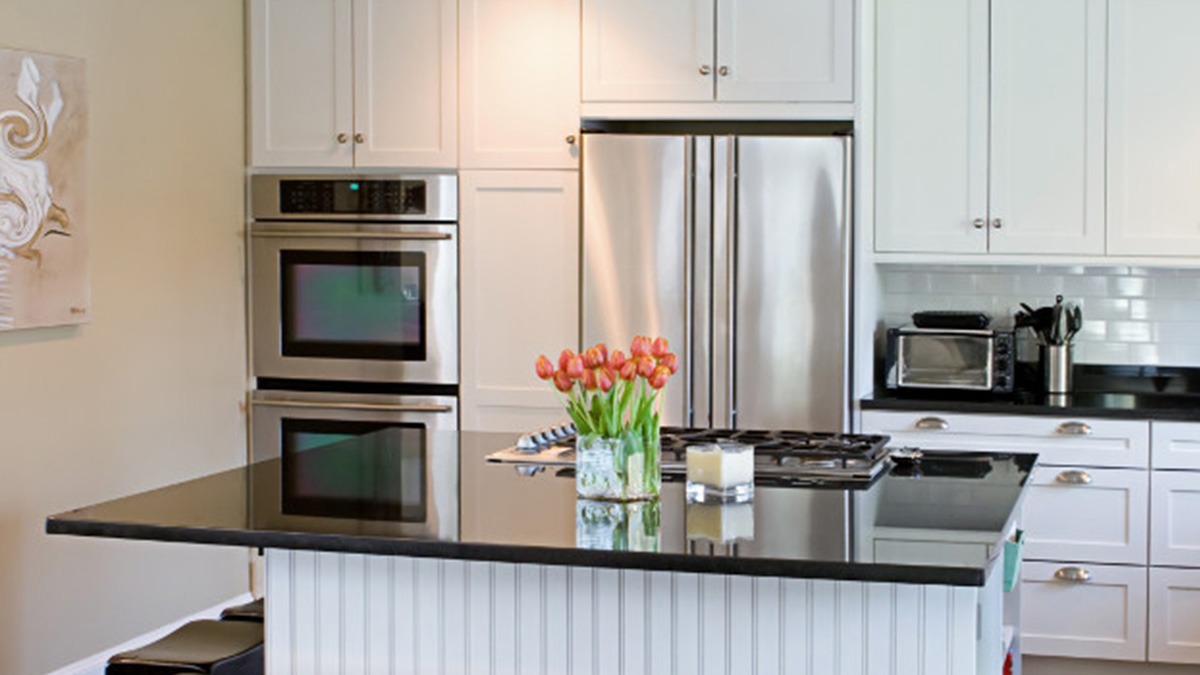Diy - How To Paint Your Kitchen Cabinets - - Truths
On the downside, the procedure can generate a lot of wetness and saturate wood. Heat removing is like a tango between the hand holding the heater and the one with the scraper. Hover the device over the surface. When the paint bubbles, gradually move the heating system along and try to establish a rhythm so that you're scraping and heating up in unison.
If you're going to utilize a chemical stripper, know that anything that eats paint threatens which getting the job done without methylene chloride (see above) will be much safer however slower. These wood removing items consist of less poisonous, less harmful components and remove both latex and oil paints. A paste with a frosting-like consistency that can be brushed, rolled, or sprayed on - Cabinet Painting 28278.
Benzyl alcohol One coat removes approximately 15 layers of paint. 3 to 24 hours Remove the paint, scrub off the residue with a wet nylon brush, and rinse with water. Cabinet Painters. about $65 per gallon This paste works with a paper cover to manage evaporation. Perfect for lead paint and masonry, but can stain furnishings woods.
Facts About Best Way To Remove he has a good point Old Paint From Kitchen Cabinets ... Uncovered


12 to 24 hr Peel off the paper and scrub the surface with a wet brush; let dry thoroughly, then use a neutralizing option. about $45 per 1 gallons This wood stripper is an orange gel, best on furniture information and flat surfaces because it is thin. N-Methyl-2-pyrrolidone (NMP) A -inch coat eliminates up to 7 layers of paint.
about $20 per half gallon Years ago, if you required a fast-acting chemical paint stripper, you selected a product that included a seriously toxic chemical called methylene chloride (likewise called dichloromethane, or DCM), cranked up the fan, and did the job rapidly. Cabinet Painting 28217. Generally speaking, the much faster a chemical consumes through paint and finish, the more poisonous it is, and DCM is fastpaint starts to bubble in minutes.
Extended direct exposure to DCM, through the lungs or skin, has actually been connected to liver damage, cancer, and even death. The vapors can overwhelm air-purifying respirators, and simply a couple of whiffs can leave you wheezing and lightheaded. Europe banned it for property use in 2010. While DCM-containing paint strippers are still widely sold in the U.S., the Centers for Disease Control and Avoidance has connected the active ingredient to 13 deaths in 10 states.
Things about How To Paint Laminate Kitchen Cabinets — Eatwell101


No paint-stripping venture is complete without an arsenal of scrapers to usher away softened paint. A 5-in-1 paint scraperalso understood as the "painter's tool" due to the fact that the curved edge can be utilized to clean a paint rolleris the go-to tool for eliminating most kinds of paint. Metal pull scrapers featured exchangeable blade profiles to match the surface you need to strip, offering more control than push scrapers in tight areas or on fine information.
After that, change or resharpen the blades. "Keep a hand file nearby to rapidly restore the edge of a steel scraper," states TOH basic professional Tom Silva. "Brace the scraper against a flat surface area, attempt to follow the initial bevel, and constantly file in the same direction." Carbide blades hold an edge a lot longer than steel, however resharpening needs a diamond stone and some skill.

When utilizing push scrapers, choose plastic over metal, to prevent gouging; this is specifically important with chemical strippers, which can soften wood. Almost 90 percent of houses developed prior to 1940 have some paint packed with this harmful metal. Although its usage entered into high decline after 1950, lead-based paint wasn't banned in the U.S.
Not known Facts About 2022 Cost To Paint and Stain Kitchen Cabinets, Doors, Garage Doors - Residential Painting.Contractors - 704-931-8438
Here's how to identify it. Use an energy knife to make a V-shaped cut through all the layers of paint, then brush the groove with a LeadCheck swab. A brilliant red color indicates lead is present. Scrape a table-spoon of chips into a bag and send them to a lab for screening.
For a few hundred dollars, a certified lead inspector will perform an X-ray fluorescence test to identify the amount of lead present in all the painted surfaces in your house. Lead is nasty. Direct exposure can raise your high blood pressure, tension your anxious system, and damage your memory, to name a few dangers. Cabinet Painting 28227.
If you desire to remove lead-based paint yourself, in addition to the gown and prep steps (next), follow these safety measures: Use only heat or chemicals to avoid kicking up lead-laced chips and dust If you need to sand, usage equipment fitted with a shroud and a HEPA vacuum attachment. Wet-sand removed surface areas to decrease dust.
All about How To Remove Accidental Paint From Your Kitchen Cupboards
Place particles in contractor bags; seal with duct tape. Find more helpful ideas at www2.epa.gov/ lead. Avoid canvas drop fabrics in favor of 6-mil plastic sheeting, which will not trap fine grit or let chemicals permeate through. Extend the sheeting a minimum of 6 feet beyond the work location and overlap and tape the edges.